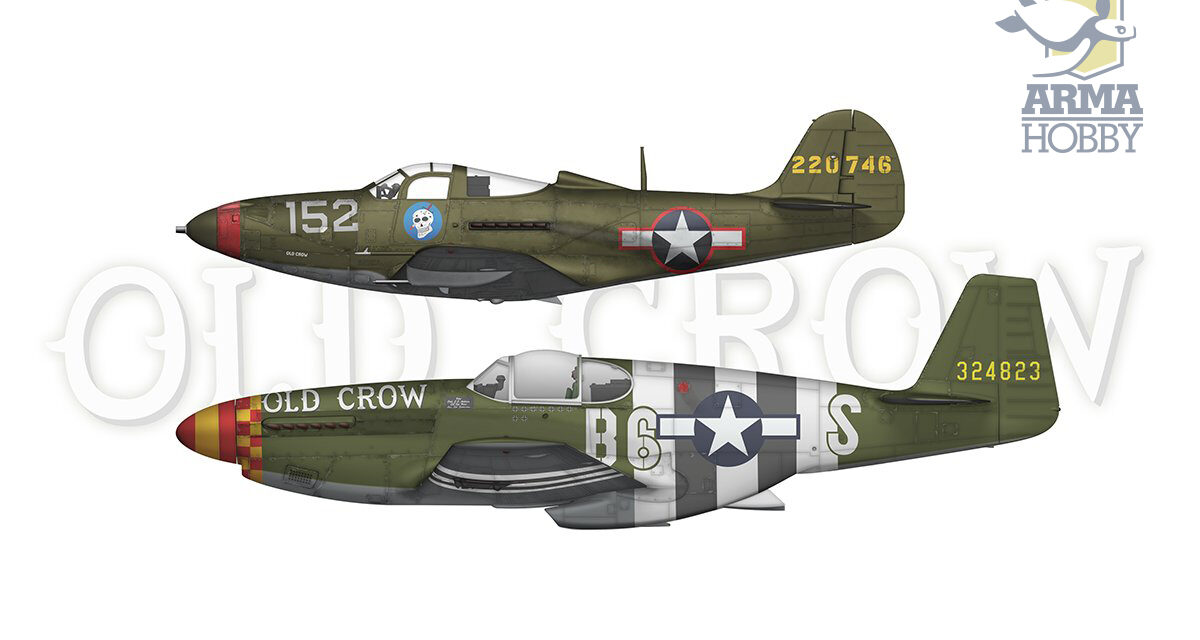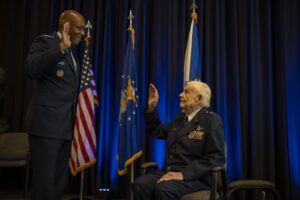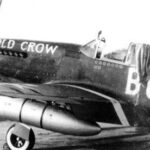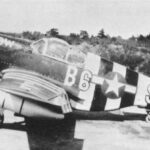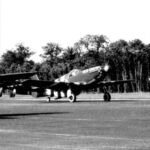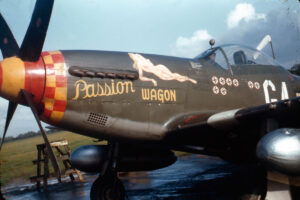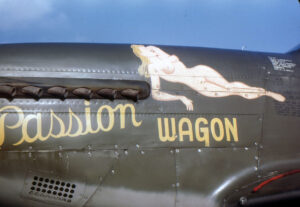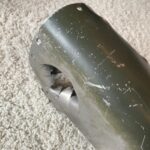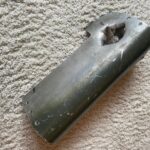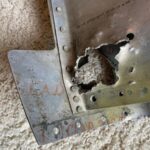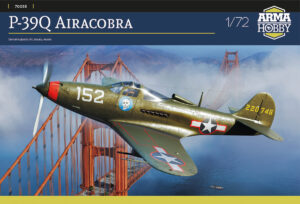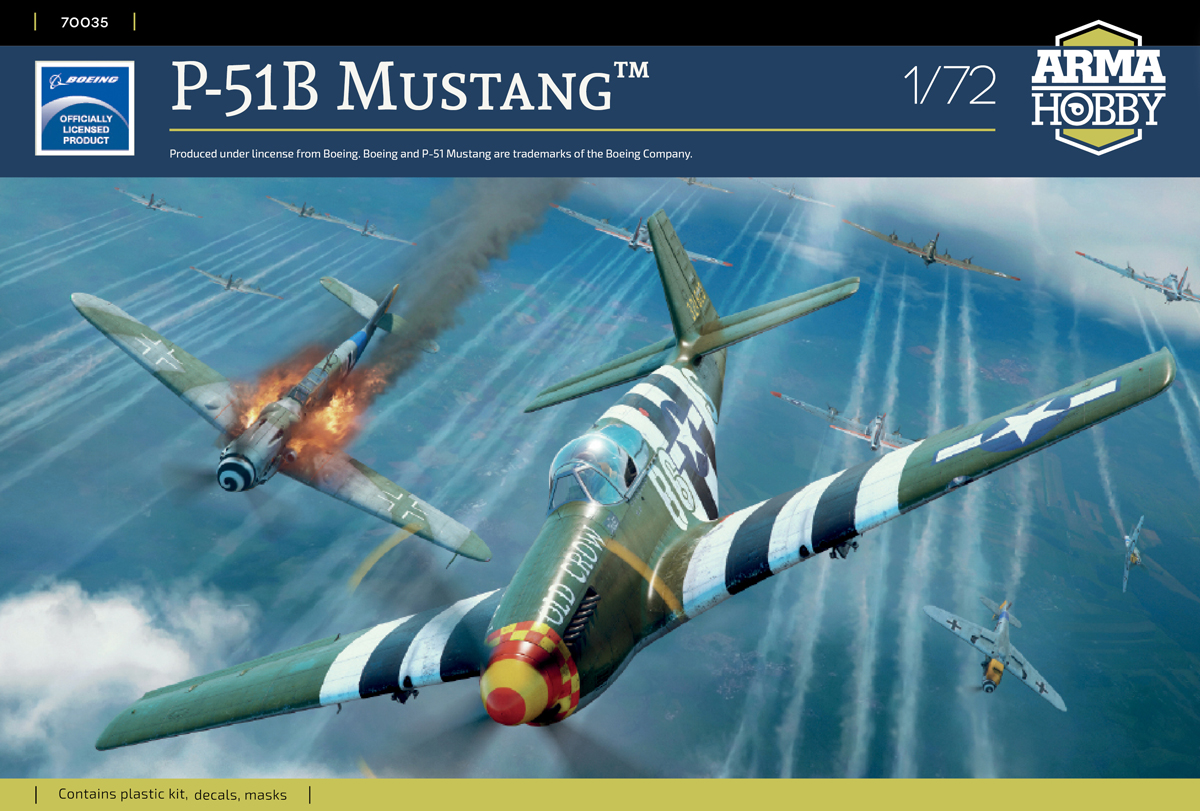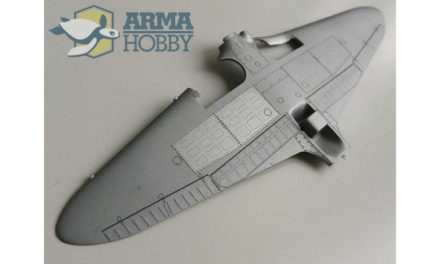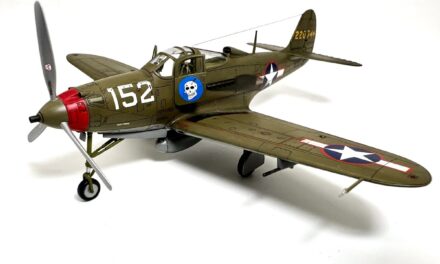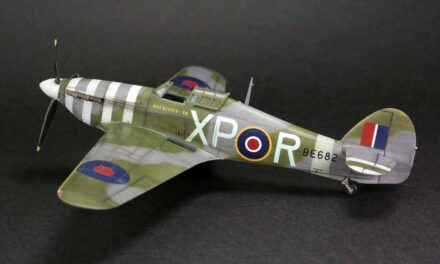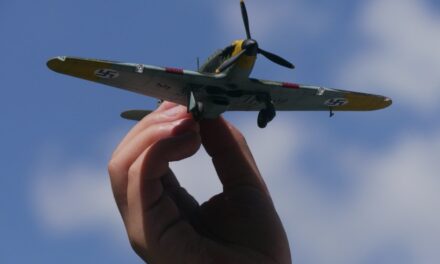On 13th January 2023 Brigadier General Clarence ‘Bud’ Anderson turns 101. The oldest living American fighter ace and the last American triple ace, he received an honorary promotion to the rank of brigadier general in December.
His extraordinary personality and combat achievements were then presented on our blog by Jim Roeder, historian of the 357th Fighter Group USAAF.
In the next part of Jim Roeder’s article, we present in detail ‘Bud’ Anderson’s particular planes.
We invite you to read!
357th Fighter Group
The 357th Fighter Group was formed at Hamilton Field, California and trained in California, Idaho, Wyoming and Nebraska with the P-39 Airacobra. Initially equipped with new and “other than new” (one pilot called them “Hand Me Downs) P-39Q’s, the group later received P-39D’s and N’s. These were also “other than new”. Many came with Squadron or Group colors belonging to the previous unit still applied. A number of the P-39’s retained their previous markings while used by the 357th FG. Some of their P-39’s carried colors of 2 squadrons at the same time. The P-39’s of the 357th were assigned the following Squadron colors: 362nd = White, 363rd = Red and the 364th = Yellow. The Squadron color was applied as a band around the nose with the forward edge of the band even with the Spinner base. The band went completely around the nose including over the gun troughs.

At this time the only known exception to this rule was the P-39 assigned to the Group Commander. On his P-39 the white band stopped at the edge of the gun trough on each side. The space between the troughs was white. This is the only 357th P-39 for which photographic evidence of this anomaly has been found. Fortunately, this print is a color print.
While some P-39’s received the Squadron Color painted on the tail, several had the color of one Squadron on the nose and a different Squadron color on the tail. Despite much effort, no definitive answer for this anomaly has been discovered. It is known that many of the Group’s pilots flew more than one P-39. Anderson flew several P-39’s while in training, including the one he watched Yeager bail out of at Tonopah. The gear would not lower and Yeager was ordered to bail out.
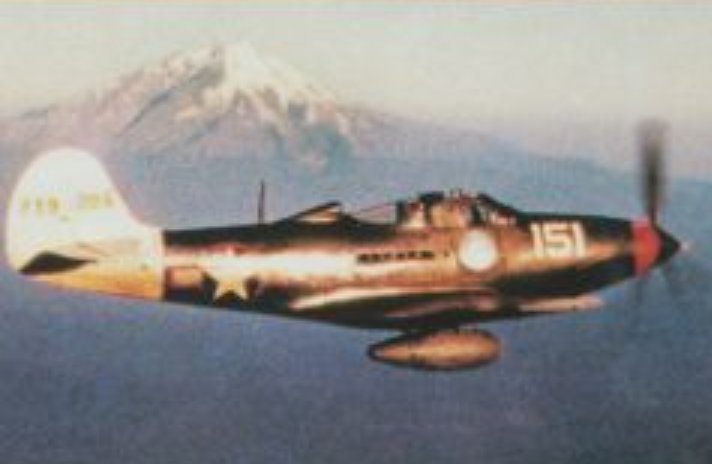
After completion of training, the Group was sent to England. It arrived in Scotland aboard RMS Queen Mary on 28 November 1943. The 357th was originally assigned to the 9th Air Force at Raydon Airfield and would have been the 9th’Air Force’s second P-51 group. However, the decision was made to transfer the 357th to the 8th Air Force instead. In return for getting the 357th, the 8th traded the P-47 equipped 358th FG that was based at Leiston Air Field. Now assigned to the 8th Air Force, the 357th moved from Raydon to Leiston with the 358th moving to Raydon Air Field. Beginning January 1944, individual pilots (Flight Leaders, Squadron Commanders and the Group Commander), flew combat orientation missions with the 354th Fighter Group. Meanwhile, the 357th began receiving the rest of their P-51 Mustangs. The Group flew it’s first combat mission as a Group on 11 February 1944.
At the turn of March and April 1944, the group was ordered to paint distinctive red and yellow markings on the noses of the aircraft.
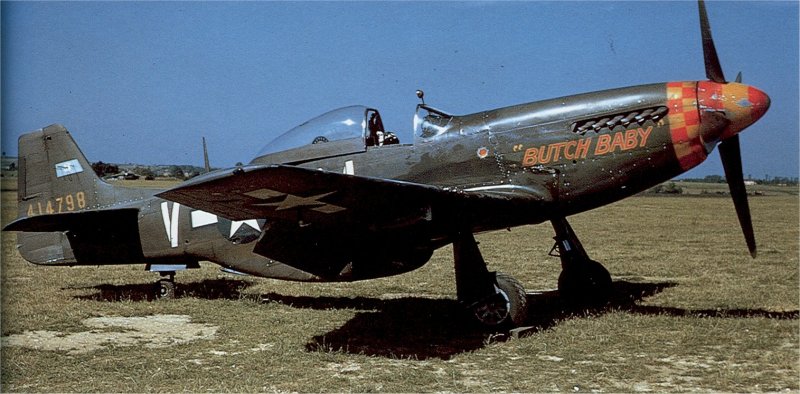
It flew it’s last combat mission on 25 April 1945. The pilots of the 357th scored 595.5 aerial victories and 106.5 ground victories. This was achieved during only 15 months of combat flying. Much has been written about the 357th FG as a whole and it’s individual pilots.
BUD ANDERSON’S ASSIGNED AIRCRAFT IN WW2 “OLD CROWS”
While with the 357th, Bud had five different aircraft named “OLD CROW”. All five aircraft just had the name painted on the nose but did not have any number identifying the specific order of acquisition. He named his planes after his favorite brand of whiskey. His first “Old Crow” was a P-39Q Airacobra and the next four were P-51 Mustangs. He flew 2 combat tours with the 357th.
“OLD CROW” (1) Bell P-39Q Airacobra 42-20746. Squadron Number 152
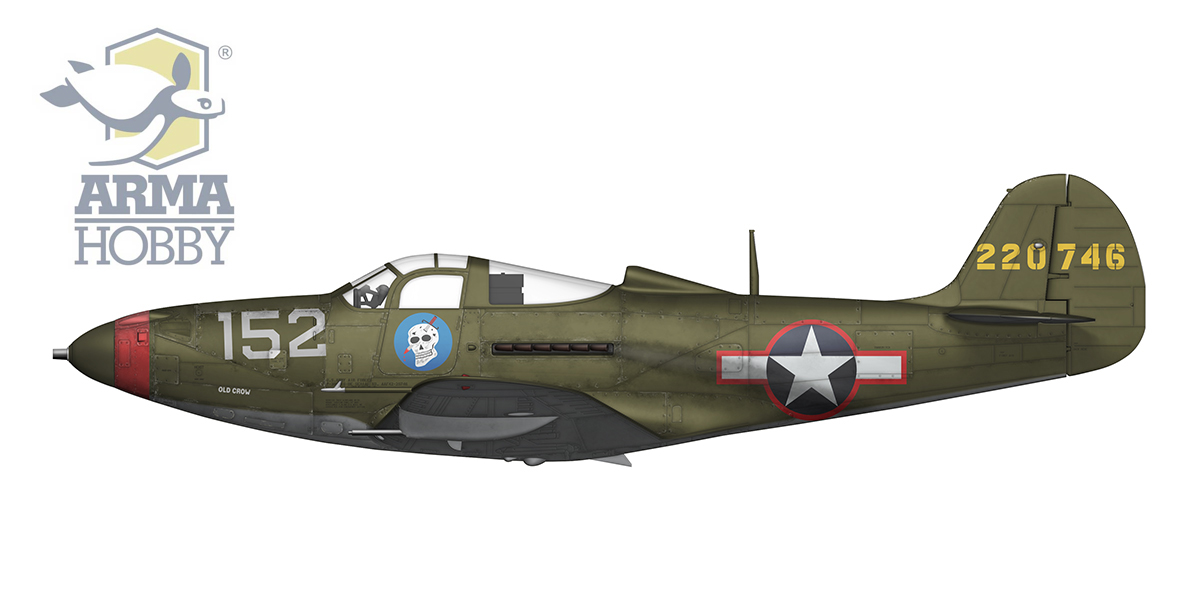
Bud’s P-39 was painted Olive Drab and Neutral Grey. Aircraft number 152 was painted in White on the Gun Bay doors on each side of the nose. The name “Old Crow” was painted in White below the number 2 on the right side and the number 1 on the left side between the a/c number and the demarcation line between the OD and Neutral Grey.
The 363rd FS assigned color – Red- was painted around the nose. The ring extended from the 2nd row of rivets from the base of the spinner to the base of the spinner. On each entry door was a large 363rd FS insignia. Aircraft serial number was on the tail in Yellow.
The National insignia in all four positions had the Red surround.
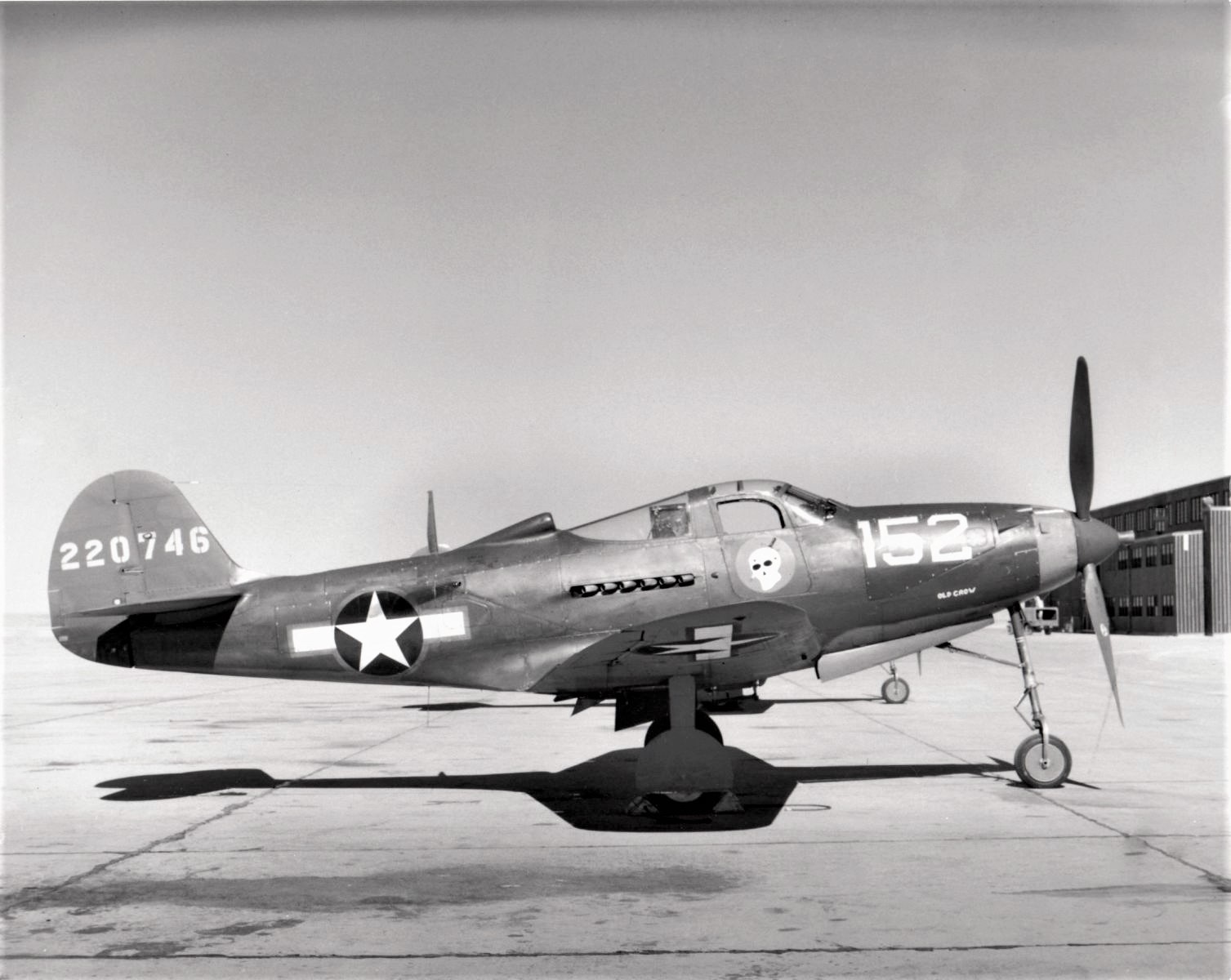
‘Bud’ Anderson stated that P-39Q-10BE 42-20746 was the only P-39 with the name Old Crow painted on the nose. His other P39’s were not named.
“OLD CROW“ 2 – first P-51 Mustang “OLD CROW” North American P-51B- 43-6723 Codes B6-S
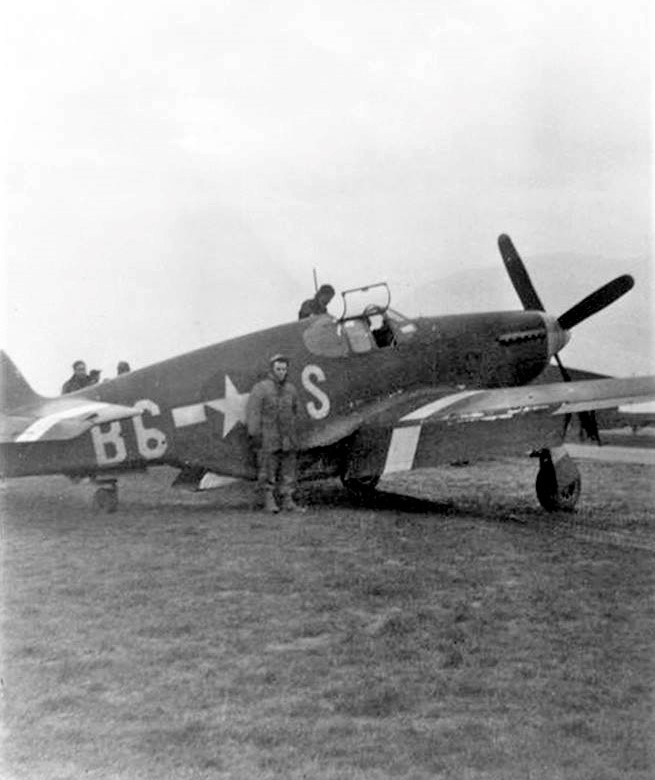
This Mustang B was painted Olive Drab and Neutral Grey with the White Type Identity markings of a White nose band and a White Stripe around each wing and horizontal stabilizers and vertical tail. For whatever reason, likely a misinterpretation of instructions, the code letters were applied incorrectly to the right side of the plane. Codes should read B6-S on the left side and S-B6 on the right, instead, the codes were applied B6-S on the right side. The name Old Crow was in smaller White letters and underneath the exhaust stacks on each side of the fuselage. This Old Crow was lost on 21 February 1944 with Lt. Al Boyle who became POW. It was lost long before the Group was ordered to apply the Red and Yellow Group markings.
“OLD CROW” 3 – second P-51 Mustang “OLD CROW” North American P-51B 43-12315 B6-S
This “Old Crow” was painted as Old Crow 2 above. It also had the White type Identity markings and was also coded B6-S. “Old Crow” was painted in Yellow underneath the exhaust stacks. A photo showing the name on this OLD CROW also shows the Code letters as Grey, as on the first of the P-51’s named OLD CROW.This aircraft had previously been assigned to a RAF Exchange Pilot- Lt Melvin Kehrer who had been lost in P-51B 43-6625 on 21 February while he was flying his fourth mission. This “Old Crow” (Bud’s second such named P-51) was lost on 22 March 1944 with Lt. Carter Jones becoming POW. The orders to apply the distinctive Red and Yellow Group markings were not received until very late March / early April 1944. This aircraft was quite likely lost before the Group Markings could be applied.
“OLD CROW” 4 – third P-51 Mustang “OLD CROW” North American P-51B 43-248423 B6-S
This aircraft was painted in RAF Dark Green and Medium Sea Grey. “Old Crow” name was painted in Black edged White letters above the exhaust stacks. This was the aircraft Bud flew on D-day and the one in which he scored the majority of his victories. When Bud left for leave at the end of his first tour, plane was assigned to Lt. William Overstreet. Overstreet renamed it “Berlin Express” but did not have the plane repainted, retaining the RAF Dark Green and Medium Sea Grey scheme he received it in.
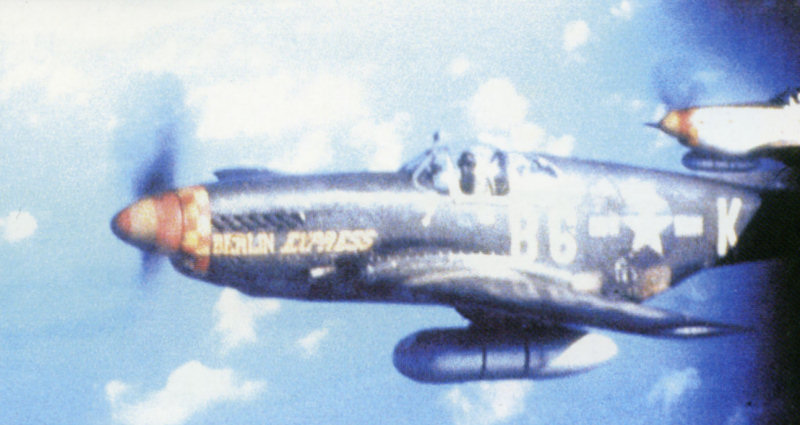
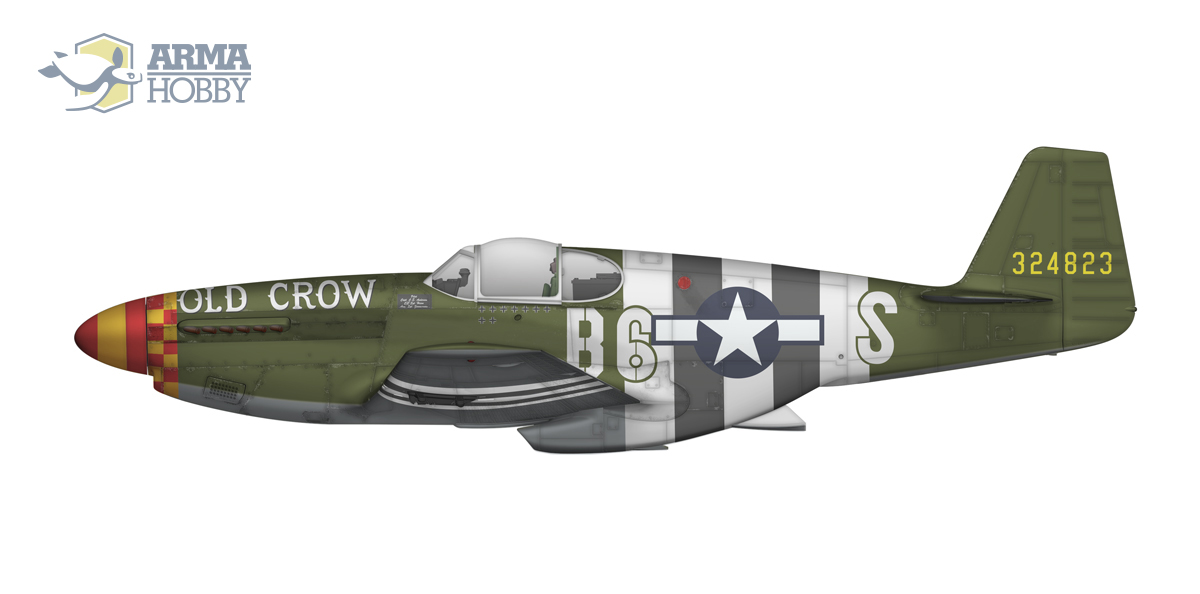
The issue of RAF Dark Green versus Olive Drab on U.S. airplanes is getting very confusing.
U.S. Military Units (as well as those all over the world) have what is known as a “Table of Organization and Equipment”.
This is also known by the abbreviation “TOE”. This table or document clearly states what type and how many of each type of equipment a unit is authorized to have. It also does the same for each rank and military specialty.
If a unit is unable to obtain enough equipment from U.S. sources, it is allowed to use authorized equivalents from local sources.
RAF Dark Green was NEVER used exclusively by the 357th. Rather, it was used when Olive Drab was either not available in sufficient quantities or not at all. However, even when both paints were available, many pilots instructed the ground crew to use the RAF colors. This was because they liked the appearance of the RAF colors because they were snazzy. Again, to clarify, RAF Dark Green and Medium Sea Grey were in fact used on many 357th P-51’s, but by no means on all.
Arval Roberson had his P-51D “Passion Wagon” painted in the RAF colors because he liked the appearance. He was not alone, but there were many cases in which RAF colors simply because the pilot liked the way they looked. Merle Olmstead (357th aircraft mechanic) stated that upon arrival of the 357th at Leiston, a warehouse was discovered to contain stocks of RAF paints including RAF Dark Green, Medium Sea Grey, Red and Yellow among a few other colors. These paints were used along with the U.S.A.A.F. supplied colors.
The use of RAF Dark Green was not limited to the 357th. As stated, the 20th FG used it on the upper surfaces of NMF P-38’s. Before and shortly after D-Day, it was anticipated that the 8th and 9th Air Force Fighter Groups would move to the continent after the invasion. Therefore many units painted the upper surfaces of their fighters. Some aircraft had their lower surfaces painted as well. By no means was the 357th alone in this endeavor or in the use of RAF Dark Green as well as other RAF colors, such as Medium Sea Grey, in repainting Fighter aircraft.” The 55th FG painted their P51 fuselages with a very unique demarcation line. Another example is the 78th Fighter Group. They painted/repainted a large number of their P47’s in RAF Dark Green upper surfaces and RAF Sky Blue lower surfaces. Publications have stated the 78th used RAF Sky, the familiar Greenish color. However, color photographs and information from 78th Fighter Group members as well as information (including said color photograph’s) prove that a Light Blue, often called Sky Blue by some was in fact the color used on the P-47’s of the 78th.
A museum Minnesota has a very interesting artifact: During one mission, Cpt. Richard Peterson’s P-51D Hurry Home Honey (of 357th FG) took a hit in the leading edge of the wing near the hinge of the landing gear leg. As the area that was damaged is one piece, the damaged part was replaced. After the part was replaced, Peterson’s crew chief gave him the damaged part. Peterson kept the damaged part. It is now in a museum in Minnesota
The part is extremely well preserved. It also is clearly in Metal color on the lower surface and RAF Dark Green on the upper.
“OLD CROW” 5 – 4th P-51 Mustang “OLD CROW” North American P-51D – 15NA 44-14450 B6-S
The name was applied to the fuselage above the exhaust stacks as on his previous ”Old Crow”. This P-51D was painted in RAF Dark Green and Medium Sea Grey. “Invasion Stripes” were on the lower surfaces only. The stripes were ordered removed from all 8th and 9th aircraft during the summer of 1944. During his last combat tour, the paint was stripped off and the aircraft remained in Natural Metal Finish. Bud stated that after a mission, he mentioned to Heino (his crew chief) that he wanted the Green and Grey paint removed. When he arrived at the plane the next morning, he saw the crew had stripped off the Green and Grey paint during the night! He stated he had not intended they do it then or even in one night! Their doing so was an example of the pride and care the ground crew took in performing their duty. This was also a sign of respect for Bud by the Ground Crew.
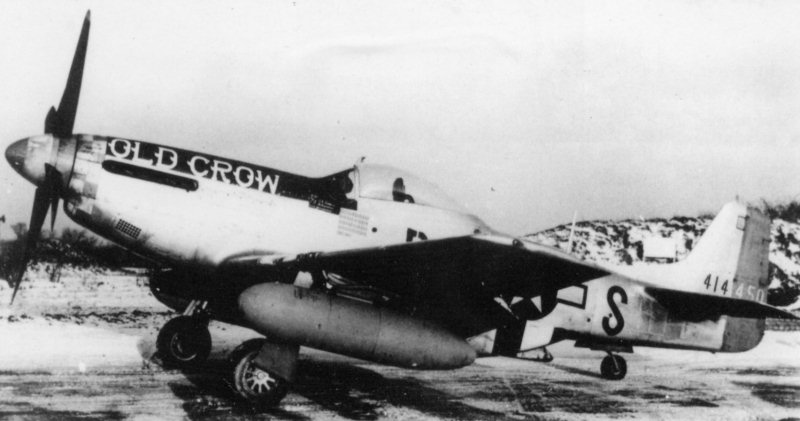
Finished P-51’s as painted at both factories, had the Olive Drab anti-glare panel sloping up from the lower side edge of the windscreen to the spinner. When the Mustangs began arriving in the so called “50/50” scheme, the Olive Drab antiglare panel was extended down to the lowest point and then continued back along the fuselage to and include the entire vertical tail and upper surfaces of the stabilizers. This applied to P-51B,C and D models. When his ground crew stripped “Old Crow” they left the antiglare panel in a straight or horizontal line.
AUTHOR’S NOTE: In several locations on the Internet, it is stated that Bud Anderson’s last “Old Crow”, P-51D-15NA 44-14450 had survived the war (which, indeed it did but not in the manner described), was restored and is now on display. Even a popular well-known site lists this aircraft as on display in Europe. However, no evidence has been discovered showing any of the 357th assigned Mustangs survived to be purchased by civilians or survive at the present time.
Check and buy General Clarence ‘Bud’ Anderson’s “Old Crow” model kits:
Aviation historian specialised in 357th Fighter Group.
This post is also available in:
 polski
polski


